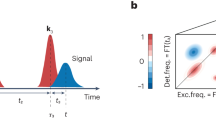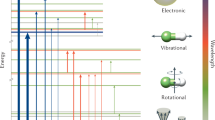Abstract
"Will all great Neptune's ocean wash this blood Clean from my hand? No, this my hand will rather The multitudinous seas incarnadine, Making the green one red."—Macbeth.
Abstract
IN the tough and stirring days in which he lived, Shakespeare can scarcely have failed to notice that a dilute solution of blood is yellow in hue instead of red, but at least he had no opportunity to learn that the same change of hue is also apparent when blood corpuscles are examined under a microscope. This observation, which has been the subject of recent correspondence in NATURE 1,2,3, appears at first sight to be one of those odd effects which can only be explained by reference to some peculiarity of vision. Actually it is an interesting and important example of the general phenomenon of dichroism, an all-embracing term used to describe the changes in hue which some media and surfaces undergo in certain conditions. Thus dichroism includes changes in hue which are observed with some media, such as blood, when their thickness or concentration is varied, the very striking and dramatic changes in colour of certain dyed materials when viewed successively in daylight and in artificial light, and the undertone of a pigment which is observed to differ in hue from that of the mass of the pigment when the latter is greatly extended with white. While it is true, as will be seen later, that certain visual factors are involved, yet the phenomenon has an essentially physical origin which is revealed when calculations are made to determine the spectral composition of the light reaching the eye.
This is a preview of subscription content, access via your institution
Access options
Subscribe to this journal
Receive 51 print issues and online access
$199.00 per year
only $3.90 per issue
Buy this article
- Purchase on Springer Link
- Instant access to full article PDF
Prices may be subject to local taxes which are calculated during checkout
Similar content being viewed by others
References
Baker, J. R., NATURE, 152, 331 (1943).
Bowen, E. J., NATURE, 152, 476 (1943).
Webb, D. A., NATURE, 152, 476 (1943).
Heilmeyer, L., trans. Jordan, A., and Tippell, T. L., "Spectrophotometry in Medicine" (Adam Hilger, Ltd., 1943).
Commission Internationale de l'Eclairage. Compte Rendu (Cambridge, 1931).
Smith, T., and Guild, J., Trans. Opt. Soc., 33, 73 (1931).
Judd, D. B., J. Opt. Soc. Amer., 23, 359 (1933).
Hardy, A. C., "Handbook of Colorimetry" (Mass. Inst. Tech., 1936).
Paterson, D., "Textile Colour Mixing" (Benn, 1927).
Newhall, S. M., Nickerson, D., and Judd, D. B., J. Opt. Soc. Amer., 33, 385 (1943).
Author information
Authors and Affiliations
Rights and permissions
About this article
Cite this article
WRIGHT, W. Dichroism. Nature 153, 9–12 (1944). https://doi.org/10.1038/153009a0
Issue Date:
DOI: https://doi.org/10.1038/153009a0
This article is cited by
Comments
By submitting a comment you agree to abide by our Terms and Community Guidelines. If you find something abusive or that does not comply with our terms or guidelines please flag it as inappropriate.



